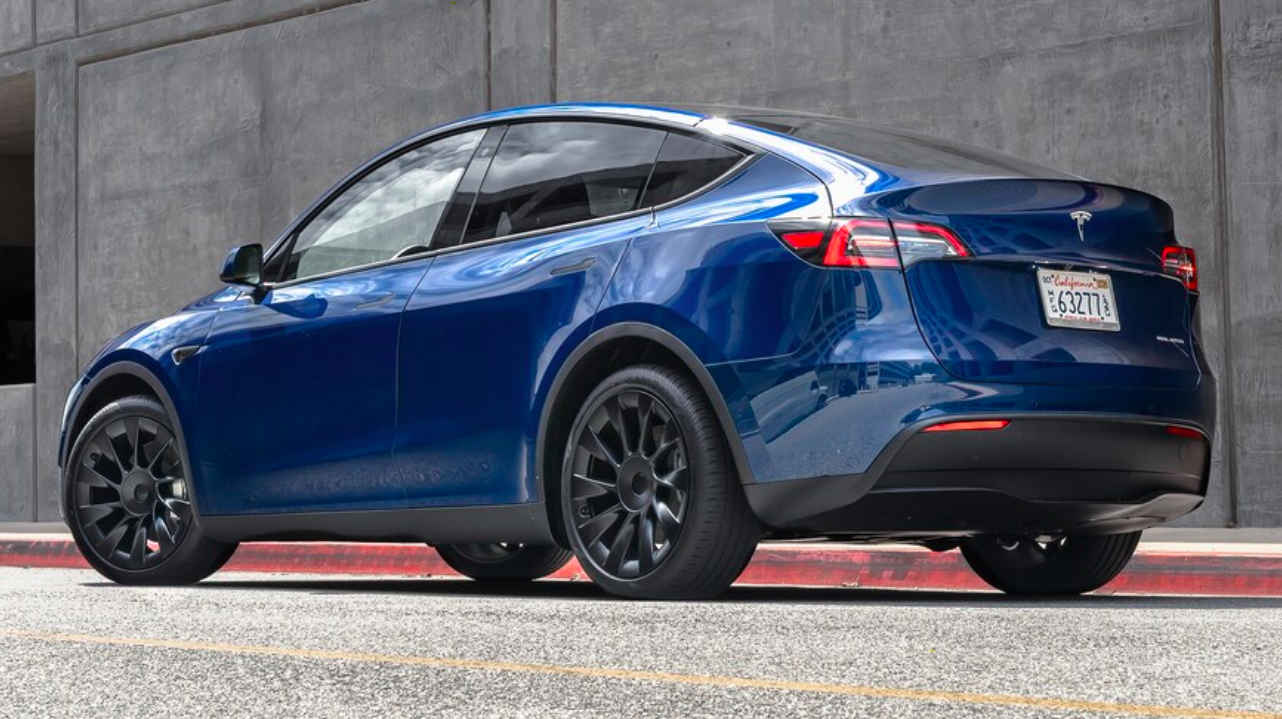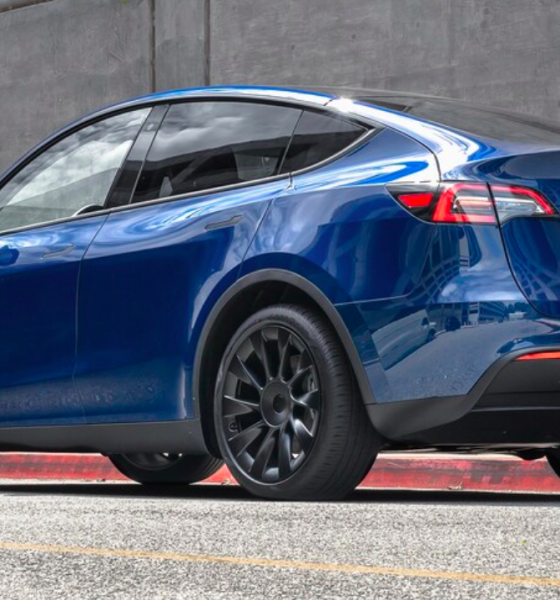

News
Tesla proved that innovation is king by shrugging off the pandemic
Following the release of Tesla’s second quarter vehicle production and delivery report, TSLA bears were quick to point out that the electric car maker’s sales dropped nearly 5% year over year. What was, of course, not mentioned by the company’s critics was the fact that Tesla’s 4.8% YoY decline was largely due to the pandemic, which has ravaged the auto industry as a whole. In the grand scheme of things, Tesla’s nearly 5% drop was tantamount to the electric car maker shrugging off the effects of the coronavirus.
Tesla’s decline in year over year sales was minuscule compared to those experienced by prominent, experienced carmakers like GM, which saw a decline of 34%, and Toyota, whose sales dropped 35%. This was reflected, at least to some degree, by the rise in Tesla stock, which saw a sharp increase since the release of the company’s Q2 delivery and production report. Instead of struggling amidst the outbreak of the coronavirus, Tesla actually seems to be thriving.
Raw sales figures aside, Tesla’s meteoric rise seems to emphasize that in today’s auto industry, innovation is king. Tesla is currently the world’s largest automaker by market cap, far surpassing Toyota, and a notable part of this is due to the company behaving much like a tech company than a traditional carmaker. The auto industry, after all, does not tend to innovate fast, with companies usually moving at a snail’s pace when it comes to improvements to its vehicles.
Tesla’s electric vehicles, while already equipped with a healthy amount of features, are bound to get better over time, thanks to constant over the air updates. This has become even more prominent in recent years, especially following the company’s decision to make basic Autopilot standard for all its vehicles save for the $35,000 Standard Range Model 3. Such a strategy all but ensured that every Tesla owner would experience having a vehicle that improves over time.
As noted in a Forbes article by tech veteran Enrique Dans, Tesla has now become the gold standard for the auto industry, which has long been used to a deliberate pace of innovation. The most notable example of this is the Tesla Model S, the electric car maker’s first vehicle that it designed from the ground up. Eight years since its initial release, the Model S is still breaking records, standing as the first and only electric vehicle with an EPA range of over 400 miles.
It is pertinent to note that consumers by nature are drawn to superior products. This is one of the reasons why Apple and its iPhone ultimately crushed the mobile phone titans of its time from companies like Nokia and BlackBerry. Cars are also high ticket items, which means that consumers will likely opt for vehicles that provide the most features and performance within their budget. Tesla’s Model 3 and Model Y are two of these vehicles, as they offer an experience that is notably different, and perhaps even better, than those provided by similarly priced gas powered cars.
Elon Musk previously noted that it’s insane to buy something else other than a Tesla. The statement then seemed like the overly optimistic proclamations of a CEO standing by the value of his company’s products. Yet as demand for the Model 3 is maintained and as demand for the Model Y increases, and as the company shrugs off what could very well be the worst pandemic in decades, it is starting to appear like Elon Musk may not be exaggerating at all.

News
Tesla FSD fleet is nearing 7 billion total miles, including 2.5 billion city miles
As can be seen on Tesla’s official FSD webpage, vehicles equipped with the system have now navigated over 6.99 billion miles.

Tesla’s Full Self-Driving (Supervised) fleet is closing in on almost 7 billion total miles driven, as per data posted by the company on its official FSD webpage.
These figures hint at the massive scale of data fueling Tesla’s rapid FSD improvements, which have been quite notable as of late.
FSD mileage milestones
As can be seen on Tesla’s official FSD webpage, vehicles equipped with the system have now navigated over 6.99 billion miles. Tesla owner and avid FSD tester Whole Mars Catalog also shared a screenshot indicating that from the nearly 7 billion miles traveled by the FSD fleet, more than 2.5 billion miles were driven inside cities.
City miles are particularly valuable for complex urban scenarios like unprotected turns, pedestrian interactions, and traffic lights. This is also the difference-maker for FSD, as only complex solutions, such as Waymo’s self-driving taxis, operate similarly on inner-city streets. And even then, incidents such as the San Francisco blackouts have proven challenging for sensor-rich vehicles like Waymos.
Tesla’s data edge
Tesla has a number of advantages in the autonomous vehicle sector, one of which is the size of its fleet and the number of vehicles training FSD on real-world roads. Tesla’s nearly 7 billion FSD miles then allow the company to roll out updates that make its vehicles behave like they are being driven by experienced drivers, even if they are operating on their own.
So notable are Tesla’s improvements to FSD that NVIDIA Director of Robotics Jim Fan, after experiencing FSD v14, noted that the system is the first AI that passes what he described as a “Physical Turing Test.”
“Despite knowing exactly how robot learning works, I still find it magical watching the steering wheel turn by itself. First it feels surreal, next it becomes routine. Then, like the smartphone, taking it away actively hurts. This is how humanity gets rewired and glued to god-like technologies,” Fan wrote in a post on X.
News
Tesla starts showing how FSD will change lives in Europe
Local officials tested the system on narrow country roads and were impressed by FSD’s smooth, human-like driving, with some calling the service a game-changer for everyday life in areas that are far from urban centers.

Tesla has launched Europe’s first public shuttle service using Full Self-Driving (Supervised) in the rural Eifelkreis Bitburg-Prüm region of Germany, demonstrating how the technology can restore independence and mobility for people who struggle with limited transport options.
Local officials tested the system on narrow country roads and were impressed by FSD’s smooth, human-like driving, with some calling the service a game-changer for everyday life in areas that are far from urban centers.
Officials see real impact on rural residents
Arzfeld Mayor Johannes Kuhl and District Administrator Andreas Kruppert personally tested the Tesla shuttle service. This allowed them to see just how well FSD navigated winding lanes and rural roads confidently. Kruppert said, “Autonomous driving sounds like science fiction to many, but we simply see here that it works totally well in rural regions too.” Kuhl, for his part, also noted that FSD “feels like a very experienced driver.”
The pilot complements the area’s “Citizen Bus” program, which provides on-demand rides for elderly residents who can no longer drive themselves. Tesla Europe shared a video of a demonstration of the service, highlighting how FSD gives people their freedom back, even in places where public transport is not as prevalent.
What the Ministry for Economic Affairs and Transport says
Rhineland-Palatinate’s Minister Daniela Schmitt supported the project, praising the collaboration that made this “first of its kind in Europe” possible. As per the ministry, the rural rollout for the service shows FSD’s potential beyond major cities, and it delivers tangible benefits like grocery runs, doctor visits, and social connections for isolated residents.
“Reliable and flexible mobility is especially vital in rural areas. With the launch of a shuttle service using self-driving vehicles (FSD supervised) by Tesla in the Eifelkreis Bitburg-Prüm, an innovative pilot project is now getting underway that complements local community bus services. It is the first project of its kind in Europe.
“The result is a real gain for rural mobility: greater accessibility, more flexibility and tangible benefits for everyday life. A strong signal for innovation, cooperation and future-oriented mobility beyond urban centers,” the ministry wrote in a LinkedIn post.
News
Tesla China quietly posts Robotaxi-related job listing
Tesla China is currently seeking a Low Voltage Electrical Engineer to work on circuit board design for the company’s autonomous vehicles.

Tesla has posted a new job listing in Shanghai explicitly tied to its Robotaxi program, fueling speculation that the company is preparing to launch its dedicated autonomous ride-hailing service in China.
As noted in the listing, Tesla China is currently seeking a Low Voltage Electrical Engineer to work on circuit board design for the company’s autonomous vehicles.
Robotaxi-specific role
The listing, which was shared on social media platform X by industry watcher @tslaming, suggested that Tesla China is looking to fill the role urgently. The job listing itself specifically mentions that the person hired for the role will be working on the Low Voltage Hardware team, which would design the circuit boards that would serve as the nervous system of the Robotaxi.
Key tasks for the role, as indicated in the job listing, include collaboration with PCB layout, firmware, mechanical, program management, and validation teams, among other responsibilities. The role is based in Shanghai.
China Robotaxi launch
China represents a massive potential market for robotaxis, with its dense urban centers and supportive policies in select cities. Tesla has limited permission to roll out FSD in the country, though despite this, its vehicles have been hailed as among the best in the market when it comes to autonomous features. So far, at least, it appears that China supports Tesla’s FSD and Robotaxi rollout.
This was hinted at in November, when Tesla brought the Cybercab to the 8th China International Import Expo (CIIE) in Shanghai, marking the first time that the autonomous two-seater was brought to the Asia-Pacific region. The vehicle, despite not having a release date in China, received a significant amount of interest among the event’s attendees.








